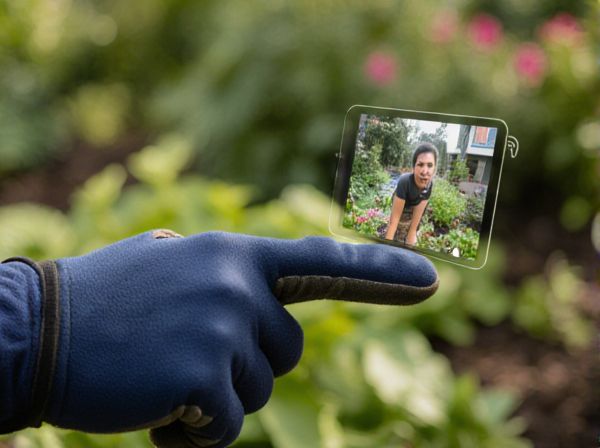
Broadcasting vs Side-dressing Illustration
Broadcasting fertilizer involves spreading nutrients broadly across the soil surface, promoting uniform nutrient availability but with potential nutrient loss through runoff or volatilization. Side-dressing places fertilizer closer to the plant roots, enhancing nutrient uptake efficiency and minimizing waste. Choosing between broadcasting and side-dressing depends on crop type, soil conditions, and specific nutrient requirements for optimal growth.
Table of Comparison
| Fertilizer Application Method | Broadcasting | Side-dressing |
|---|---|---|
| Definition | Even spreading of fertilizer over the soil surface | Applying fertilizer alongside growing crops |
| Timing | Before or at planting | During crop growth |
| Fertilizer Use Efficiency | Moderate; potential losses due to volatilization and runoff | High; targeted nutrient delivery reduces losses |
| Labor Intensity | Low; simple and quick | Moderate to high; requires precise placement |
| Impact on Crop Yield | Variable; may result in lower nutrient availability | Generally higher yields due to targeted feeding |
| Best Suitable Crops | Cereals, pastures | Row crops, vegetables, maize |
| Equipment Required | Broadcast spreader | Side-dress applicator, bander |
Understanding Fertilizer Application Methods
Broadcasting involves spreading fertilizer evenly across the soil surface, promoting uniform nutrient distribution over a large area, which is ideal for early crop growth stages. Side-dressing places fertilizer directly beside the growing plants, enhancing nutrient uptake efficiency and reducing fertilizer loss, particularly effective during mid to late growth phases. Choosing between broadcasting and side-dressing depends on crop type, soil conditions, and nutrient management goals to maximize yield and minimize environmental impact.
What Is Broadcasting?
Broadcasting is a fertilizer application method where nutrients are evenly spread across the soil surface before or after planting seeds. This technique ensures rapid nutrient availability to crops but may result in higher nutrient losses due to volatilization or runoff. Farmers often prefer broadcasting for its simplicity and suitability for large-scale fields with uniform crop growth.
What Is Side-dressing?
Side-dressing involves applying fertilizer directly to the soil near the base of growing plants, allowing nutrients to be absorbed efficiently during critical growth stages. This targeted method minimizes nutrient loss compared to broadcasting, which spreads fertilizer broadly across the field surface. Side-dressing enhances crop nutrient uptake, improves yield potential, and reduces environmental impact by limiting runoff and volatilization.
Comparing Efficiency: Broadcasting vs Side-dressing
Broadcasting fertilizer involves spreading nutrients uniformly across the soil surface, ensuring quick nutrient availability but often leading to higher losses through volatilization and runoff. Side-dressing places fertilizer closer to the plant roots, enhancing nutrient uptake efficiency by reducing losses and improving targeted delivery during critical growth stages. Studies show side-dressing can increase nitrogen use efficiency by up to 30% compared to broadcasting, resulting in better crop yields and reduced environmental impact.
Best Crops for Broadcasting Application
Broadcasting fertilizer is most effective for cereal crops like wheat, barley, and corn, where nutrients are spread evenly across the soil surface prior to planting. This method supports rapid nutrient availability and uniform growth in broadcast-friendly crops that have shallow root systems. Side-dressing is generally preferred for row crops such as tomatoes and potatoes, where precise nutrient placement near the roots enhances uptake efficiency.
Best Crops for Side-dressing Application
Side-dressing fertilizer is most effective for row crops such as corn, cotton, and sugar beets where nutrient uptake during rapid growth stages is critical. This method ensures precise nutrient placement near the root zone, enhancing nitrogen use efficiency and minimizing losses. Crops with extensive root development, like tomatoes and peppers, also benefit significantly from side-dressing compared to broadcasting.
Pros and Cons of Broadcasting Fertilizer
Broadcasting fertilizer allows for quick and uniform application over large areas, enhancing nutrient availability to crops with minimal labor input. However, it often leads to higher nutrient losses through runoff and volatilization compared to side-dressing, reducing fertilizer efficiency. Crop nutrient uptake may be less targeted, increasing the risk of environmental pollution and inconsistent growth responses.
Pros and Cons of Side-dressing Fertilizer
Side-dressing fertilizer allows for targeted nutrient application near the plant root zone, enhancing nutrient uptake efficiency and reducing fertilizer waste. It minimizes nutrient loss through volatilization and runoff compared to broadcasting, promoting better crop yield and environmental sustainability. However, side-dressing can be labor-intensive and requires precise timing and equipment to avoid crop damage and ensure uniform fertilizer distribution.
Environmental Impact: Which Method is Safer?
Side-dressing reduces nitrogen runoff and greenhouse gas emissions more effectively than broadcasting, minimizing environmental pollution. Broadcasting often leads to higher fertilizer losses through volatilization and leaching, increasing soil and water contamination risks. Precision application via side-dressing enhances nutrient uptake efficiency, supporting sustainable agricultural practices and protecting ecosystems.
Choosing the Right Method for Your Garden
Broadcasting spreads fertilizer evenly across the entire soil surface, ideal for established lawns and large garden beds requiring uniform nutrient coverage. Side-dressing involves applying fertilizer directly beside growing plants, targeting root zones for efficient nutrient uptake and minimizing waste, making it suitable for row crops and vegetable gardens. Selecting the right method depends on crop type, growth stage, and soil nutrient needs to optimize plant health and yield.
Broadcasting vs Side-dressing Infographic

 gardendif.com
gardendif.com